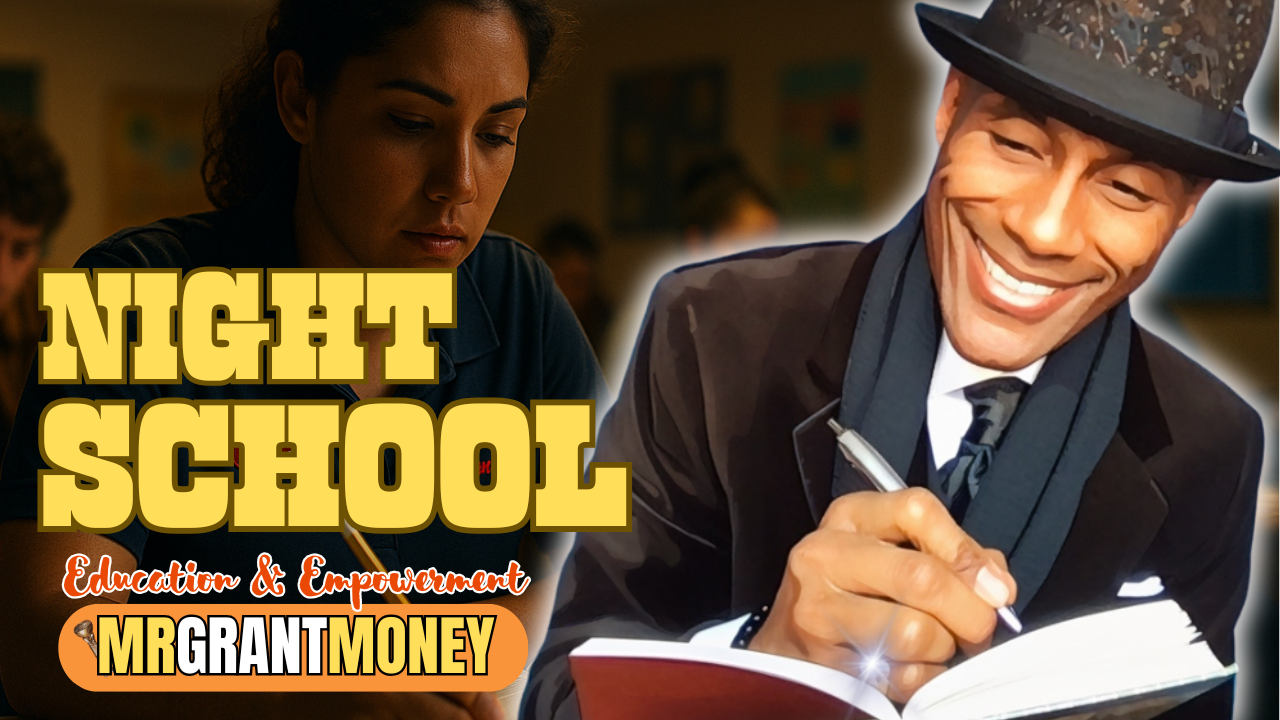The Floating Classroom: Mr. Grant Money & Education by Boat in Indonesia

 Wednesday, July 16 - Maluku, Indonesia
Wednesday, July 16 - Maluku, Indonesia
Twelve-year-old Ani can name every constellation in the sky—she just can’t spell her own name.
That’s what the principal whispered to me the first time I stepped onto a dock in Maluku, Indonesia. The night was thick with salt and diesel smoke. We were standing on the edge of a tiny island that doesn’t exist on most maps—one of thousands that make up this country’s impossible geography. Boats bobbed in the darkness. Kids peered at us from beneath woven lanterns.
Ani was bright. Hungry to learn. She’d taught herself star patterns from her grandfather, a fisherman who navigated without GPS. But she’d never held a real textbook. Her island had no school, no signal, and until last year—not even a teacher.
Let me tell you something: I’ve reviewed grant applications in boardrooms and briefing centers from DC to Dakar. But that moment—standing on the edge of the world with a brilliant child who couldn’t access a basic education?
That’s the kind of thing that doesn’t leave you.
And it’s the reason I boarded a ferry, a rickety speedboat, and finally a reimagined fishing vessel… all to help launch a floating classroom revolution.
🌆 Setting the Scene
Indonesia is the world’s largest archipelagic state, made up of over 17,000 islands stretching across three time zones and some of the most beautiful, remote landscapes on Earth. But this stunning geography comes with a brutal truth: millions of children are educationally stranded.
In provinces like Maluku, Papua, and Nusa Tenggara Timur, entire island communities have no access to brick-and-mortar schools. For some kids, reaching the nearest classroom means crossing turbulent seas in unpowered boats—if the weather even allows it. During monsoon season, many go weeks without a lesson.
And then there's the tech gap. Indonesia’s urban centers are awash in edtech, fiber optics, and app-based tutoring. But out here? You’re lucky if your mobile phone holds one bar. Forget Zoom classes. Forget tablets. In some villages, electricity runs three hours a day—if at all.
Meanwhile, climate change is worsening the odds. Rising tides, storm surges, and flooding have made fragile docks and transport routes unreliable. Education is no longer just about access. It’s about survival.
But this is where innovation takes root. When the land can’t hold your schools? You put them on water.
🎯 The Visionaries
The movement began with a handful of fearless educators.
Sari Widjaya, a former headmaster in Ambon, had grown tired of watching island kids fall through the cracks. Her turning point? A letter from a child in Pulau Haruku that simply read:
“I want to learn. I don’t know where.”
She refused to let that be the end of the story.
Sari linked up with Arul Fajar, a retired fisherman who’d retrofitted his wooden boat into a floating tech lab using donated solar panels and marine plywood. They called their makeshift vessel Pelita One—“Light One”—and began piloting a model: visit isolated islands, dock for three days, teach basic literacy, distribute educational materials, and then return the following week.
They created a cooperative called Pelita Laut—Light of the Sea—and recruited volunteer teachers, tech mentors, and youth leaders from across the islands. The boats carried solar batteries, rugged tablets, whiteboards, and an offline e-learning library pre-loaded with math, science, environmental studies, and local history.
The results? Jaw-dropping. Literacy rates on their first five target islands improved by 41% in under a year. Parents began organizing dockside study groups. Some islands even petitioned the Ministry of Education to make the boat visits part of the formal curriculum.
There was demand. There was proof. But there wasn’t scale.
That’s when they reached out to me.
💼 Enter Mr. Grant Money
Sari’s message came through a mutual contact at UNESCO Jakarta. Her subject line simply said:
“We float. Can you help us sail?”
You better believe I could.
I took the next red-eye to Ambon. The plan was simple: I’d audit the program, identify fundable elements, and find the right global mechanism to blow this thing wide open.
What I saw when I arrived? I won’t lie—it floored me.
Teachers sleeping in hammocks between lessons. Kids crowded around solar-charged tablets. Waterproof books lashed to the rails with banana rope. And yet? The joy. The commitment. The results. These weren’t boats. They were miracles in motion.
I sat with the crew, reviewed their logs, interviewed families, and drew up a tiered funding roadmap:
-
Primary target: the Global Partnership for Education (GPE) – Education in Emergencies and Protracted Crises grant.
-
Co-financing: UNDP’s Small Grants Programme focused on island resilience.
-
Ed-tech accelerator: pitch to Google.org’s AI for the Global Goals for hardware and offline tools.
-
Regional boost: apply for ASEAN Education Fund innovation support.
We didn’t need a billionaire. We needed alignment.
✍️ Crafting the Winning Application
The narrative had to hit hard—and it did.
We opened with maps. Not just of where the boats traveled, but of where kids had never seen a teacher. We layered in testimonials: a mother in Seram who said she’d learned to read with her daughter, both of them huddled together by lantern light. A 9-year-old boy who now tutors others on his island after acing basic numeracy exams.
We presented data:
-
12,000+ students reachable in 18 months
-
30% projected increase in reading comprehension
-
55% increase in retention for girls aged 10–14
-
$180 per child, per year cost—less than half of traditional rural schooling
And we made it poetic.
“Where roads cannot go, hope still floats.”
Funders don’t just want numbers. They want impact wrapped in vision. And that’s exactly what we gave them.
📢 The Approval & Aftermath
The approvals came in quicker than we’d hoped.
-
GPE awarded $2.4 million for fleet expansion, educator salaries, curriculum, and regional coordination.
-
UNESCO Innovation Fund came in with $850,000 for ed-tech support, content development, and teacher training.
-
Google.org shipped 500 rugged offline-ready tablets and AI translation tools for local languages.
Within nine months, the Pelita Fleet had tripled in size. 12 boats now serviced 42 islands on rotating schedules. Girls previously out of school were enrolling—and excelling. One island, Pulau Saparua, formed its own student council on water.
And little Ani? She’s now a reading captain on her island. I received a video of her leading a lesson, pointing to a constellation on a chalkboard taped to the mast.
She can spell her name now.
🔑 Grant Money Takeaways
Let’s anchor this with a few truths for anyone trying to fund a dream that feels impossible:
-
Geography is not destiny.
Where formal infrastructure fails, creative delivery models can—and must—step in. -
Your proof doesn’t have to be perfect. It has to be powerful.
Pelita One wasn’t fancy. But the outcomes were undeniable. Funders love scrappy when it works. -
The more specific your story, the more universal your impact.
This was about Indonesian islands. But it spoke to rural Alaska, the Amazon, and low-lying villages in Bangladesh too. -
Stack your funders.
No one pot will do it all. We layered emergency funds, innovation dollars, and tech support. -
If the system doesn't reach the child—build a system that sails.
That’s not just policy. That’s justice.
👋 What About Your Story?
Somewhere, a kid is waiting for a classroom that hasn’t arrived. Maybe it floats. Maybe it wheels. Maybe it logs on with solar power in a storm-struck village.
If you’ve got the spark, the sweat, and the soul—I’ve got the playbook.
Let’s build it. Let’s fund it. Let’s launch.
🛍 Explore More
-
Visit the Mr. Grant Money Blog for more impact stories
-
Support the mission via the Mr. Grant Money Store
-
Check out Mr. Grant Money Music for themed songs and message-driven tracks
💬 Discussion Questions
-
In your opinion, what’s more powerful—technology or creativity—when it comes to solving access issues in remote communities? Why?
-
Do you know a place or community that would benefit from a “mobile solution” like the floating classroom? What would it take to build it?
-
How can education systems better adapt to climate change and geography, instead of expecting students to fit rigid structures?
-
What barriers do you think funders face in identifying unconventional projects like Pelita Laut—and how can we change that?
-
If you were designing an innovative education delivery model for your region, what would it look like? Who would be your partners?
🔓 UNLOCK EXCLUSIVE TIPS WITH MR. GRANT MONEY!
We hate SPAM. We will never sell your information, for any reason.
















